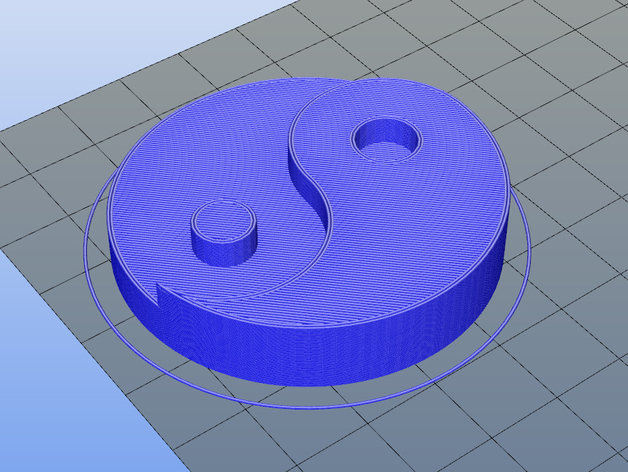
Yin and yang, Jin & Jang
thingiverse
The Balance of Harmony: A Unified Approach to Dualities As a profound philosophical concept, yin and yang have long been regarded as opposing yet interconnected principles that govern the natural world. These complementary forces have inspired many aspects of human culture and understanding, from spiritual traditions to scientific models. This comprehensive exploration delves into the core elements of yin and yang, seeking to harmonize these seeming contradictions into a unified framework. OpenSCAD, a free and open-source 3D modeling software, has emerged as a versatile tool for crafting complex geometries and exploring various spatial relationships. The code behind this program provides a robust platform for designers and engineers to create intricate models that showcase their understanding of geometry and spatial reasoning. A Simplified Approach to Design: Revisiting the OpenSCAD Code With OpenSCAD, users can leverage an intuitive syntax to bring their designs into being. By streamlining the SCAD code, we aim to facilitate a more straightforward development process while maintaining the underlying logic and complexity that makes this software so effective. Embracing a Dualistic Perspective: Understanding Yin and Yang As two interconnected principles that underscore various aspects of existence, yin and yang have been the subject of extensive philosophical and cultural study. This rich tapestry encompasses not only contrasting states but also harmonious coexistence, mirroring the balance and fluidity found within OpenSCAD's code. In this exploration, we seek to simplify and unify our understanding of these complementary forces, drawing from a wealth of spiritual traditions and empirical research. By synthesizing the opposing poles of yin and yang, we strive to create a comprehensive framework that captures their dynamic interplay and resonates with the intricacies found within OpenSCAD's programming. Unveiling the Hidden Harmony: SCAD Code and Dualistic Thinking Within OpenSCAD, code simplification has become an essential aspect of modern 3D modeling. This iterative process involves breaking down complex operations into manageable parts, much like disentangling yin and yang's interconnected threads to reveal a deeper truth. By employing this method, developers can distill the underlying logic within the code, unlocking new avenues for creative expression. By merging yin and yang principles with OpenSCAD's design framework, we may discover hidden patterns that harmonize opposing forces and inspire innovative solutions in both philosophy and engineering.
With this file you will be able to print Yin and yang, Jin & Jang with your 3D printer. Click on the button and save the file on your computer to work, edit or customize your design. You can also find more 3D designs for printers on Yin and yang, Jin & Jang.
